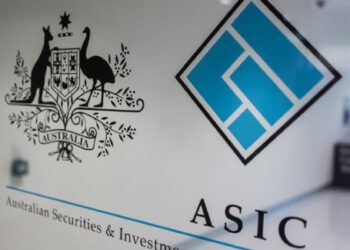Katie Timms, partner of SMSF services at RSM Australia, said carbon farming in relation to SMSFs will be “a big problem or a big opportunity, depending on which way you look at it”.
“We need to make sure that we’re across it. Around $80 billion of our exports come from primary production and primary producers as an industry are facing some challenges, and that’s automatically going to flow across into SMSFs that own primary production land.”
Timms said carbon credits and carbon farming were not new, but were starting to put more pressure on farmers.
“We’re starting to see this pressure on sustainability and environmental reporting from supply chains.”
“[Organisations like] Coles and Woolworths are now having to report on their environmental sustainability and are coming back to their providers and their supply chain and asking them what they are doing to also reduce their emissions. A lot of these big companies are starting to commit to zero net emissions by 2050 and that flow-on pressure is coming down to our primary producers.”
This meant primary producers were having to look at different strategies to reduce their carbon emissions and re-evaluate what some of their land could be used for regarding this, Timms said.
She continued that carbon credits are a tradable unit and a financial product, so anyone advising on them should have a financial licence. Carbon credits are obtained by engaging in registered projects which involve either sequestering carbon (removing carbon from the atmosphere and storing it in the land) or reducing emissions (preventing the release of carbon).
These projects could include converting cropping land to permanent pasture, changing pasture species, changing fertilisers, native forest regeneration, or beef herd management.
Timms said there were four major concerns for SMSFs that entered into any registered carbon project of which advisers need to be mindful – the first being the underlying use of the land.
“[You have to determine whether] it actually changes the underlying use of the land.”
“What we need to be careful of is, if we’re actually entering into one of these carbon projects, whether it is the super fund or the lessee, whether it is still being a primary production business. Converting to a ‘not for harvest’ farm would change it but changing beef herd management would not. However, remember, whether or not you are a primary production business only matters if you want the two-hectare exemption.”
The next issue to consider would be who was or should be responsible for the project.
“It can be the landowner or the lessee. These projects often come with big capital outlays so it is important to think about whether the super fund is the place where we want to be doing it or do we want to be doing it in another entity?” she said.
“Sometimes that decision then is also about whether we want to be earning those carbon credits at the end, and where do we want the passive income coming from?”
A project could be registered by the landowner or the lessee as long as consent was granted. If it was the lessee, they must have the legal right to carry it out, and a lawful right to be issued with the credits.
Timms added some questions to consider: is permanence attached, including where the cash to fund is coming from, are there cash flow problems or a surplus, and what is the income generation potential?
The third issue, and one of the more complicated, would be understanding the tax involved in these projects, she said, and the jargon used.
“Are the units a Registered Emissions Unit (REU) and if so are they Kyoto units or Safeguard mechanism credit units? Or are they Verra verified units or Gold Standard Verified Emission Reduction Units?”
“If they are an REU, then they are taxed under Division 420 similar to trading stock. SMSFs were excluded from this for certain assets. If they are not an REU they fall outside Division 420, and taxes can vary. GST treatment also varies depending on the type of credit.”
The final issue would involve ongoing compliance issues and how the credits would be valued each year.
Consideration also needed to be given as to whether all the transactions were on an arm’s-length basis and whether there was sufficient cash to fund the project.
“Everything has to be reported in the correct name and the correct entity has to pay for the capital costs or there could be acquisition of asset issues,” Timms said.
“There is an opportunity for some SMSFs holding farmland to enter into a carbon credit project but it could be a headache for others. They may also have an impact on farmland prices as corporate entities look for ways to help their carbon issues.”


